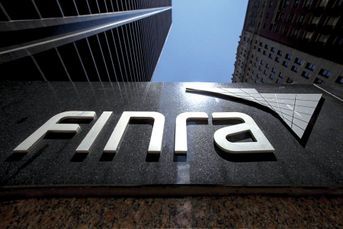The hunt for mega RIAs

Independent advisers are enjoying the attention of Wall Street, where some big banks are focused on acquiring privately held assets
Despite the widespread economic and social pain caused by the COVID-19 pandemic, it’s shaping up to be another banner year for megafirms, those registered investment advisers with $5 billion or more in client assets.
The pandemic clearly threw a wrench into mergers and acquisitions of target RIAs during the first half of the year, but the market for acquisitions has already started to bounce back and the second half of 2020 looks bright. Megafirms thrive on M&A.
It’s been an extreme year for all advisers and financial professionals. After falling 35% to its low in March, the broader stock market has bounced back sharply, with the S&P 500 only 3.4% below its February high as of last Wednesday’s close. That means that while revenues fell about 15% for some RIAs at the end of the first quarter, they billed clients at a significantly higher level at the end of the second quarter.
Because of their size and scale, the mega RIAs are enjoying the attention of Wall Street, where many bankers and private equity managers are focused on acquiring privately held assets that throw off significant cash flow. That means the owners and CEOs of such firms can kick around the idea of selling to a giant bank or private equity manager, or even going public.
Recent history well illustrates such a notion. Two years ago, Focus Financial Partners Inc. listed its shares on the Nasdaq and raised $535 million. Last year, in perhaps the single most validating move for mega RIAs, Goldman Sachs acquired megafirm United Capital for $750 million in cash.
“I would not be surprised if there was another United Capital-type transaction for a mega RIA,” said Marty Bicknell, CEO of Mariner Wealth Advisors. “I’m a true believer that large, Wall Street firms will enter this space. I don’t know when, but I’m convinced more will be coming.”
SELLER’S MARKET
Megafirms are facing two drawbacks. First, large firms in the neighborhood of $1 billion of client assets that don’t sell soon will only see their valuations rise because of the extraordinary demand from buyers, Bicknell said. Second, there are more and more buyers looking to build mega RIAs, and build them fast.
In the past year, the mega RIAs that have been among the most active acquirers include Creative Planning, Mercer Advisors, Cerity Partners and Captrust. Newcomers include CI Financial, a Canadian institution buying its way into the U.S. RIA industry, and Wealthspire Advisors, which was formed after Sontag Advisory and Bronfman Rothschild merged last year.
“The trend of more advisers leaving traditional firms to work at RIAs or open their own firms will continue and consolidation will increase,” Bicknell said. “And the more people chasing the same number of deals will cause prices to go up.”
WILD RIDE
The share price of Focus Financial, with more than $200 billion in client assets at the end of December, shows what a wild ride it has been for megafirms this year. After bouncing along in the range of $30 per share in January and February, it fell below $13 per share in March. Since then, it has rebounded and traded above $38 per share this month.
As InvestmentNews has reported over the past decade, the growth of the large RIAs, with $1 billion or more in assets, and the megafirms has been remarkable. A search of Form ADV filings reveals that increase: At the end of May, there were 274 RIAs with $1 billion or more in client assets, an increase of 45% since 2015, and 35 megafirms with $5 billion or more in assets, a jump of 24% over the past five years.
Deal-making was down dramatically during the first half, even as the field is getting much more crowded, industry executives and analysts noted. According to investment bank and consultant DeVoe & Co., the first half of 2020 saw 15 leading RIA acquirers, like Focus Financial and Mercer Advisors, complete 31 acquisitions; that compares to 46 by the same firms in the first half of last year, a drop of 33%.
Look for the megafirms to be extremely active in the second half of the year when it comes to buying smaller RIAs. Mercer Advisors, for example, has announced three acquisitions of RIAs since the end of June with combined close to $1.8 billion in assets.
PRESSING FORWARD
“It takes six to eight months to get a deal done,” said Dave Barton, vice chairman and head of M&A at Mercer Advisors. “So the deals we are announcing now started before COVID-19 hit. And it was tough during the negotiations because revenues were off from 14% to 16% from the market peak in February. That’s pretty significant.”
“But we saw this as an opportunity to press forward and we decided to lean into deals,” Barton said. “You’re going to see a string of announcements coming from us.”
“The RIAs that were holding back from selling were sitting on the fence,” he said. “They knew it was a seller’s market. Then the pandemic hit, the stock market dropped, and these same folks realized they didn’t have the scale and capacity to do the work, campaigning and outreach that’s necessary for hundreds of clients during a crisis. We have that scale.”
“Those firms realize they need to join a scale player, that this is when you need a partner,” Barton said. “You don’t need a partner when the market is roaring. You need a partner when the market is going crazy and you’re in jeopardy of losing your clients.”
“But there has been no price erosion for RIAs looking to sell due to COVID-19,” Barton added. “It remains a strong seller’s market.”
MONEY DOWN
The abundance of private equity funds shopping for RIAs will also continue to spur the RIA M&A market, said Brian Hamburger, president and CEO of MarketCounsel, which advises breakaway brokers.
“Private equity money is not that patient,” Hamburger said. “It’s there to make a deal and if it doesn’t, it will lose the ability to do them.”
“When you have a private equity firm backing an RIA with an owner that has already cashed out, it’s a lot easier to put those funds at risk because it isn’t the founder’s money anymore,” he said. “That has something to do with firms continuing this pace of deals even though business logic says there is greater uncertainty in the market.”
What’s changed, executives and consultants said, is how big firms are structuring deals for RIAs. Before the pandemic, owners of RIAs with $1 billion in assets could receive 80% of the price at the completion of the acquisition.
Now, in the wake of the volatility in firms’ revenues caused by the market sell-off, deals are commonly being struck that have a larger portion deferred for a period of time, like 12 months. That’s an incentive for the seller to make sure as much as 100% of the firm’s revenues wind up with the buyer.
“It was megafirms that were writing bigger checks up front, and when COVID-19 hit they dialed that back for good reason,” said David DeVoe, managing director of DeVoe & Co. “It’s a riskier environment, and the buyers are trying to mitigate risk.”
“It’s a new vintage of deals, with buyers putting 50% to 60% down, compared to 70% to 80% several months ago,” he added.
Learn more about reprints and licensing for this article.








